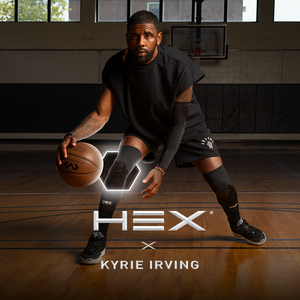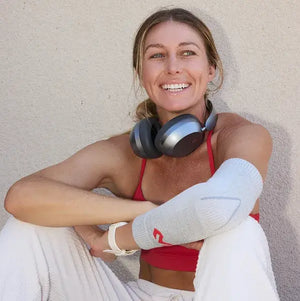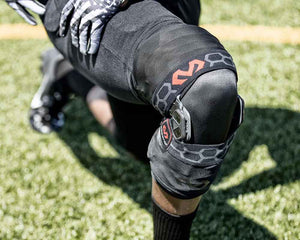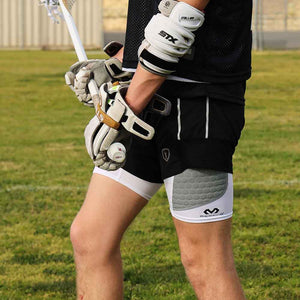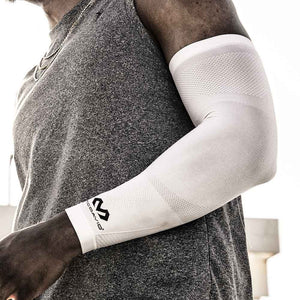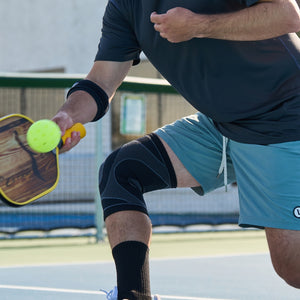Whether you want to prevent an ankle injury, have chronic ankle pain or are recovering from an ankle injury, an ankle brace is an essential piece of protection. Ankle braces provide support and protection from a variety of ailments and injuries including arthritis, plantar fasciitis, tendonitis, sprains, ankle pain and inflammation. Here are some tips on how to choose the best ankle brace:
Choosing the most comfortable ankle brace
Ankle braces provide excellent support, but a brace that fits poorly or utilizes the wrong material may end up being uncomfortable. To make sure your ankle brace is as comfortable as possible, think about the below:
-
Proper Fit: Ankle braces are typically sized based on your shoe size or ankle circumference, so be sure to consult the sizing chart to get your best fit and support
-
Neoprene vs Fabric: Neoprene is a flexible material, allowing for a close fit to the body and providing both support and heat insulation for protection against ongoing pain. However, neoprene does not breathe well and may be too hot for all day use. Fabric and knit materials will usually breathe easier, keeping your feet cool but without the therapeutic heat of neoprene.
When should I wear an Ankle Brace?
Ankle braces can be used in a variety of situations, from everyday activity to high intensity sports. If you experience regular ankle pain from tendonitis, plantar fasciitis, tendonitis or just general pain, an ankle sleeve with primary protection and compression can help soothe pain. When playing sports, an ankle brace is an excellent tool to help prevent future injury or re-aggravate an old injury. Also, when recovering from ankle surgery, ankle braces help to keep the ankle supported and limit movement to aid in the recovery process.
Types of Ankle Braces
Ankle braces come in many varieties, including sleeves, braces with straps and lace up:
-
Ankle Sleeves are made of neoprene or knit fabric, and are designed to provide a primary level of protection along with moderate compression. Ankle sleeves provide support and relief from pain, swelling, and inflammation, often recommended for those with tendonitis, arthritis, plantar fasciitis or injury.
-
Ankle Supports with Straps are similar to ankle sleeves, but utilize an additional strap system over the sleeve, providing advanced protection and increased compression. Straps will typically come in a figure 8 or figure 6 configuration. Figure 8 wraps provide a full wraparound compression, which maximizes the compression level you can tighten the brace to. Figure 6 braces provide more protection from lateral movement, and are recommended for situations where you may be vulnerable to rolling your ankle and spraining it.
-
Lace Up Ankle Braces utilize a shoelace design, providing maximum support and allowing you customize the tightness of the laces from top to bottom.
How Tight Should an Ankle Brace Be?
Every athlete will have a different feeling for how tight is too tight, but in general you'll want your ankle to feel "locked in." The brace should not restrict blood flow in any way, or cause any pain due to tightness. The level of protection you decide on will also determine how tight the brace will feel, lower levels of protection will feel more flexible, while maximum protection will be quite rigid. Spend some time adjusting your laces or straps to get the perfect amount of compression and protection, without cutting off circulation or causing pain.
How to Choose the Best Ankle Brace
The perfect ankle brace for you will depend on your needs, but luckily there are are a variety of options available for all use cases.
-
Comfort: Make sure you select the correct size and material for your ankle brace, consider how breathable you want the brace to be
-
Frequency: Depending on your needs, you may wear your ankle brace for a short period of time or all day
-
Type of Ankle Brace: Sleeves, braces with straps and lace up ankle braces all provide varying levels of support, protection and compression
-
Tightness: Take time to adjust your ankle brace to not be too loose or too tight, it may take several adjustments but getting a perfect fit is critical
